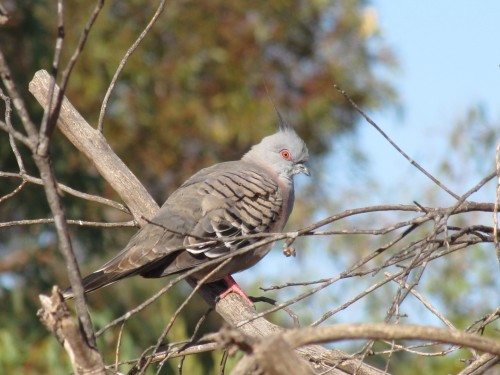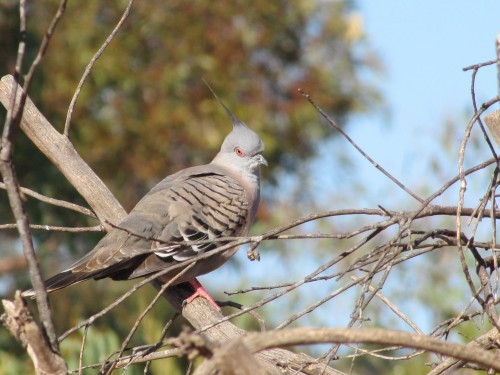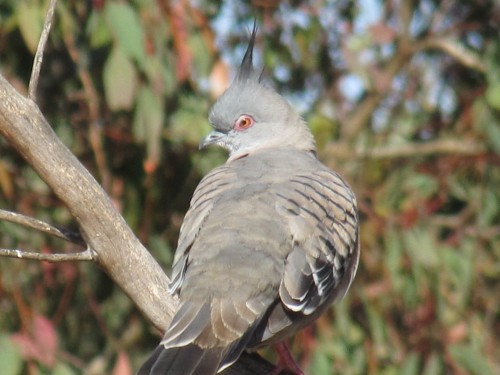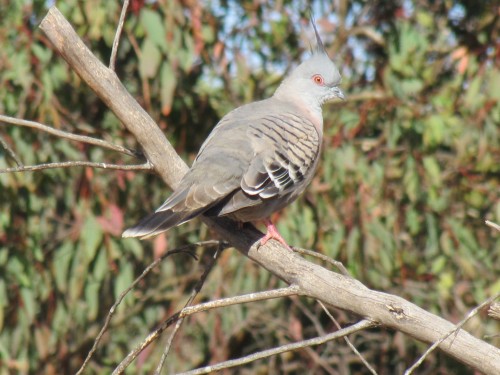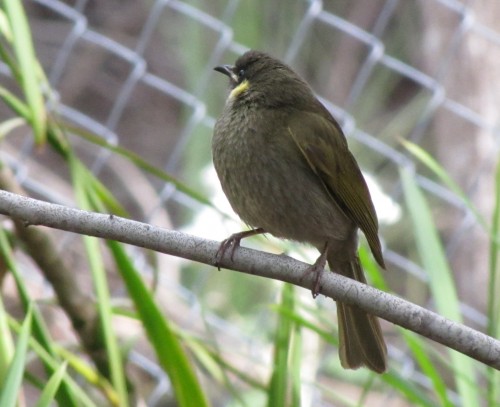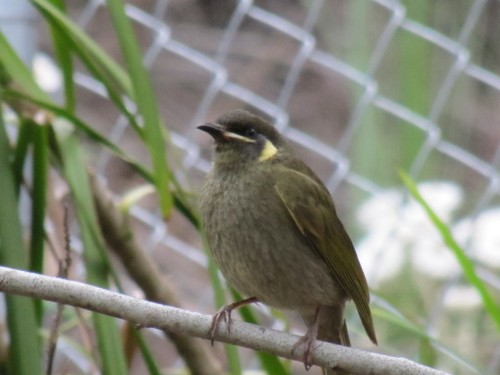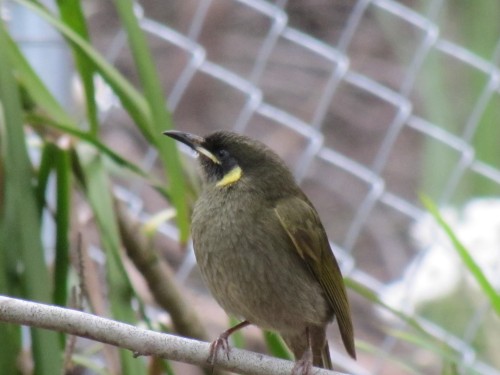Superb Fairy-wrens take a bath
We used to have a few wrens in our garden from time to time, mainly in the late 1980s and early 1990s. On all occasions they were Variegated Fairy-wrens, which is not the dominant wren species of the region.
About a year ago on our return from six weeks’ holiday overseas, we were greeted by two Superb Fairy-wrens, a male and a female, who had taken up residence in our absence. (Read about that here.) We have seen them almost every day since – except for the last month. Suddenly they have reappeared, this time with a third, uncoloured, bird. It is entirely possible that they have nested nearby without telling us, or giving away the location of their nest.
All three birds took delight in having a good splash in one of our bird baths yesterday while I was finishing my breakfast and trying to complete the crossword in the paper. Sadly, I wasn’t quick enough with the camera, so I’ll use a photo taken elsewhere on another occasion.
Never assume anything about birds
Of the many things I’ve learned about birds over the years, one principle stands out: never assume anything.
I was out in the garden searching out several birds making a noise near the house. I didn’t get much of a look at them but by their call and the quick look I had of one of them I think they were Yellow (Little) Thornbills.
As they flew off my attention was drawn to a solitary bird perched high in a dead branch of a nearby tree. “Spotted Turtledove” I immediately thought, as they are a common breeding species in our garden. I lifted my binoculars and was delighted to see that the bird in question was actually a Common Bronzewing Pigeon.
This was a good sighting, for although they are a common species in our district, they tend to prefer less populated, thicker scrubby areas. On checking my bird database I found that this was only the 5th record of this species on our block of land. My records go back 28 years, so I was quite pleased I saw this individual.
And to think I’d almost not given it another look.
Crested Pigeon in the morning sun
Earlier this week I was out in the garden taking photographs of some young Grey Currawongs being fed by their parents. After getting several good shots I went for a wander of The Estate; we live on a five acre (2 hectare) block. My attention was attracted to this Crested Pigeon perched in the sun on an exposed dead branch of a bush. (Note to self: tidy up that part of the garden and plant something alive.)
Crested Pigeons are very common around Murray Bridge. I have observed loose flocks of 20 – 50 perched on power lines in many parts of the district. They are a resident breeding species on our block of land, and seem to nest most months of the year. (Perhaps that is why they are so common.)
I must say that they are very obliging photographic subjects.
Lewin’s Honeyeater
On our recent visit to Sydney to stay with family, my wife and I took out an afternoon to visit the Ku-ring-gai Wildflower Garden near St Ives. we’d been here on a number of other occasions and usually enjoyed the visit.
The gardens are open daily from 8am to 5pm and are accessed off Mona Vale Road. There is no entry fee and the education centre is available for functions for a fee. Extensive walking trails and picnic areas make this a very attractive place to visit, especially for birders and native plant enthusiasts like my wife.
Over a number of visits I have sometimes been a little disappointed with the bird life, but mostly it is quite good. The thick vegetation allows a wide range of small bush birds to hide in safety, but this sometimes can cause a little frustration identifying them, and especially challenging for photography. It was with delight then, that I captured reasonable shots of a Lewin’s Honeyeater. It posed for my camera for several minutes, perching on an exposed branch in range of my lens.
This species is found along the eastern coastal regions of Australia. This was a particularly pleasing sighting as I’ve only ever seen it on several previous occasions.
Noisy Friarbird and a few other birds
On our current trip to Sydney to visit family, we stopped a few times along the way. As I said yesterday, the journey is over 1300km, so we need to stop a few times for fuel and to change drivers. We also stop occasionally for a cup of tea and a meal break. On these occasions we usually choose a place well away from towns and in a bush setting; the birding is often better.
On the second morning of our trip we stopped at an unnamed rest area on the side of the Sturt Highway between Hay and Narrandera, NSW, in the locality of Tubbo Station. While having morning tea and a cuppa I saw a number of bird species, including Australian Ravens, Australian Magpies, Willie Wagtails, Black-faced Cuckoo-shrikes, Grey Shrike Thrush, White-winged Choughs and the tiny Weebill. All lovely birds but very common in this area, and all birds I’d seen many times while driving along.
We also saw several Yellow Rosellas, a beautiful bird and less widespread than many parrots. Another interesting bird is the Apostlebird, one I always enjoy seeing on the journey over to Sydney. Undoubtedly the highlight of this brief stop was to see several Noisy Friarbirds, one of the honeyeaters of Australia. While this is a common species in the eastern parts of Australia, it’s not one I’ve seen very often, making it an extra special sighting. I didn’t get a photo of it, but you can read more about this species and see a photo here.


